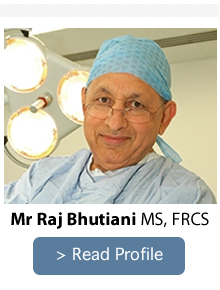VARICOSE VEINS
Veins are blood vessels, which take the impure (deoxygenated) blood from various parts of the body to the right side of heart so that it can be pumped into the lungs to get oxygenated and circulate again via the left side of the heart.
The venous blood in the limbs is pumped up by the action of the muscles (muscle pump) around the veins, helped by one way valves which make sure the blood always travels from foot up and from superficial veins under the skin to deep veins inside the muscles.
If one or more valves get destroyed (congenital weakness, pregnancy, increased pressure inside the belly etc), the blood travels backwards and the peripheral veins become dilated, tortuous and thin out to hold this extra blood. These present as varicose veins.
Nearly 5% -10% of males and 25% of females develop varicose veins at some stage in their lives.
These varicose veins which are practically useless to the body, if left untreated can cause (complications):
- Bleeding even from the slightest of trauma
- Dark pigmentation of the skin around the ankle, which persists for life
- Breakdown of the skin around the ankle (Ulcer)
- Phlebitis
Patients with varicose veins usually feel:
- Painful and heavy legs towards the end of the day and before periods
- Putting the legs up helps it
- Tortuous veins visible under the skin
- Itching over the varicose veins
- Hyper-pigmentation of the skin around ankle or lower leg
- Ulcer around the ankle
What should I do if I have varicose veins:
- Use compression sport stockings to keep symptoms under control
- See a specialist who deals with varicose veins
- Do Not Neglect the varicose veins to avoid complications
- Remember these veins are useless to the body and can only cause problems and can never disappear on their own
TREATMENT:
The Gold standard treatment for decades has been Stripping of the varicose veins
Needs general anaesthesia
Can be done as a day case, without the need to stay in the hospital
Causes some bruising, which can be uncomfortable, but settles in
a fortnight or so.
The final results are excellent and well accepted if done by trained surgeons.
If You Like NOT to have General anaesthesia:
Over the recent years new procedures called “Endo-vascular” treatment also called minimally invasive treatment have evloved. These can be done under Local anaesthetic and one can “Walk In and Walk Out” after the procedure.
There are new and upcoming treatments, which can give equally good effects and can be done under Local anaesthesia.
These include:
Radio Frequency VNUS ablation of the vein:
Under Local anaesthetic under Ultrasound control, the surgeon punctures the vein just below the knee joint and passes a catheter up to the groin and then injects a lot of cool local anaesthetic solution around the vein to form a cushion and protect the surrounding structures. The vein is destroyed from inside using the radio-frequency waves to block of the vein (akin to stripping the vein).
A pressure bandage is applied for 48-72 hours and then patient is advised to wear sport stockings for 1-2weeks, to get optimal effect.
I have found this to be effective and safe procedure with excellent results.



